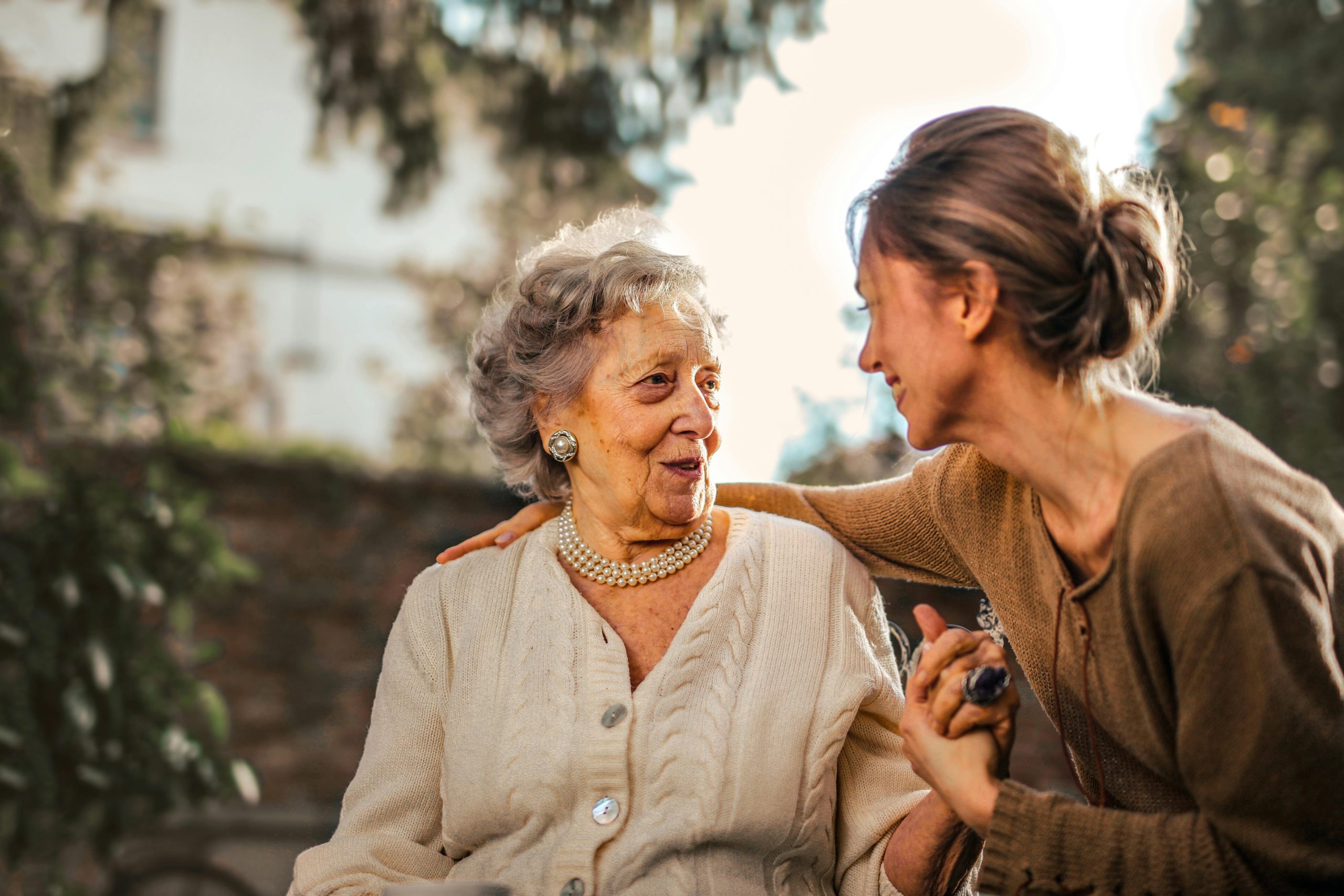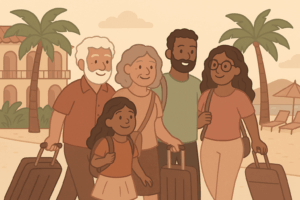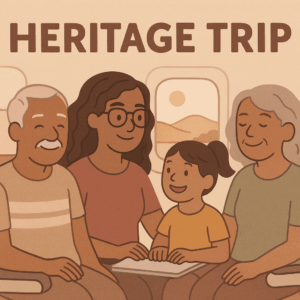The Moment It Hit You
You were standing in St. Peter’s Basilica, still slightly disoriented from the jet lag, running on espresso and the adrenaline that comes from finally making it to Rome. The air smelled like candle wax and old stone, and your feet were already tired—but in that moment, you didn’t care.
Your mom was beaming, head tilted back, completely mesmerized by the ceilings. Your aunt kept whispering “Dios mio” every time she saw another gilded detail. It was beautiful. Holy, even. And you, you felt proud. This was the trip your mom had talked about for years, and you made it happen. You booked the flights, figured out the trains, juggled everyone’s preferences, and found that little trattoria with the authentic pasta to try later. You were tired, but glowing, like you just won the Daughter of the Century Award.
And then your mom tripped.
Just a small stumble on the uneven marble—didn’t even fall—but in that split second, your brain played out a full horror reel:
- What if she hits her head?
- What if this ruins the whole trip?
- What if the insurance doesn’t cover this?
- What if we have to fly home early?
- What if her mobility is worse than I realized?
- Omg what if she dies?!
She caught herself on your arm. Laughed it off. But you didn’t. That worst case scenario escalated in your mind real quick.You were suddenly very aware that so much about travel isn’t built with older adults in mind. And you felt a wave of guilt, for not thinking through every possible scenario beforehand. You weren’t just the trip planner anymore. You were the person doing mental math about how many steps are left, how far the bathroom is, and whether there’s a bench nearby.
Exhale…It wasn’t a crisis. But it was a wake-up call.
A Different Kind of Logistics
What you realized in that moment (and what no one really tells you) is that traveling with older adults comes with a different kind of logistics. Not just emotional drama. Not just difficult personalities. But bodies that move differently. Reflexes that aren’t as quick. Knees that don’t bounce back. Bladders that don’t wait.
None of it makes the trip less meaningful but it does mean you need to plan around a different set of needs than what you’re used to.
And it’s not always the big things, either. Sometimes it’s that long walk from security to the gate at the airport. Or the hotel lobby with stairs but no handrail. It’s the charming little cobblestone street that feels less charming when your mom’s ankle is already swollen from the day before. It’s the early dinner because they don’t like eating late, or skipping the wine tasting because alcohol messes with their meds.
These aren’t deal breakers, they’re design challenges. And with the right planning, you can build a trip around their reality, not your assumptions.
Make Room for the Reality and the Joy
Traveling with older adults doesn’t mean you have to strip your itinerary of all the good stuff. It just means you need to build in more buffers, ask a few different questions, and be willing to trade “packed” for “purposeful.”
Before You Go:
- Ask about health limitations upfront. What medications are they on? What mobility issues do they have? Do they use a CPAP, need daily naps, or avoid stairs? The more you know now, the less scrambling later.
- Suggest they check-in with their doctor. Especially if it’s a big international trip. Get guidance on things like vaccinations, altitude changes, and medication timing across time zones. It would be even more effective if you could join those doctor visits.
- Request accommodations early. Think wheelchairs at airports (even if they don’t think they need it), ground-floor hotel rooms, or travel insurance with robust medical coverage.
- Help them pack smart. Think compression socks for flights, reusable water bottles, walking shoes with support, and a compact medical kit. And don’t forget the little luxuries like a scarf for cold plane cabins or a travel pillow they’ll actually use. Give them a list and see what they already have or want to get themselves. Then, consider getting the rest of the items to bring with you even if they were deemed unnecessary.
While You’re Traveling:
- Build in rest time. Not just one afternoon. Think pacing: a big outing, followed by a slower day. A seated tour after a walking-heavy day. A coffee break with a view instead of rushing from one landmark to the next.
- Plan for meals and meds. Make sure you know when they need to eat, take medication, or avoid certain foods. Keep restaurant hours and menus in mind.
- Be flexible with transit. Choose direct flights when possible. Consider trains over buses. Use car services instead of relying on walking long distances or figuring out public transport on the fly.
When You’re Back:
- Give them time to recover. Older bodies need longer to bounce back. Don’t expect them to jump right back into daily routines.
- Ask what they loved and what was hard. Use that feedback for next time. You’re not just planning a trip, you’re learning how to make the next one even better.
- Celebrate what worked. Share photos, talk about the highlights, and let them feel proud of themselves for going.
Because here’s the thing: fun and safety are not opposites. With the right support, they can climb to the top of that scenic overlook, stroll through a market, or float with a goofy pool noodle. It might take a little more effort on the front end but the memories? Those are priceless.





